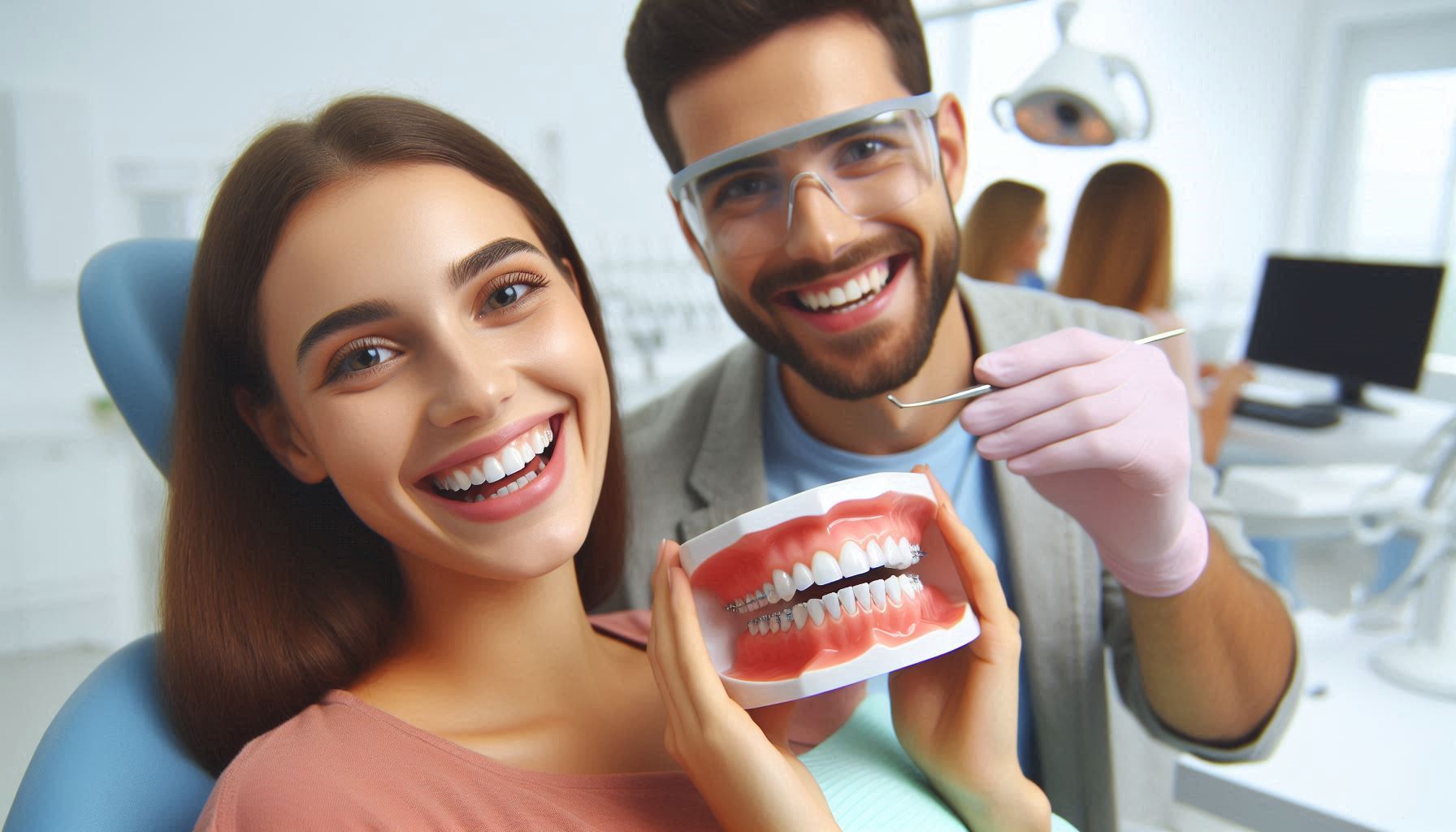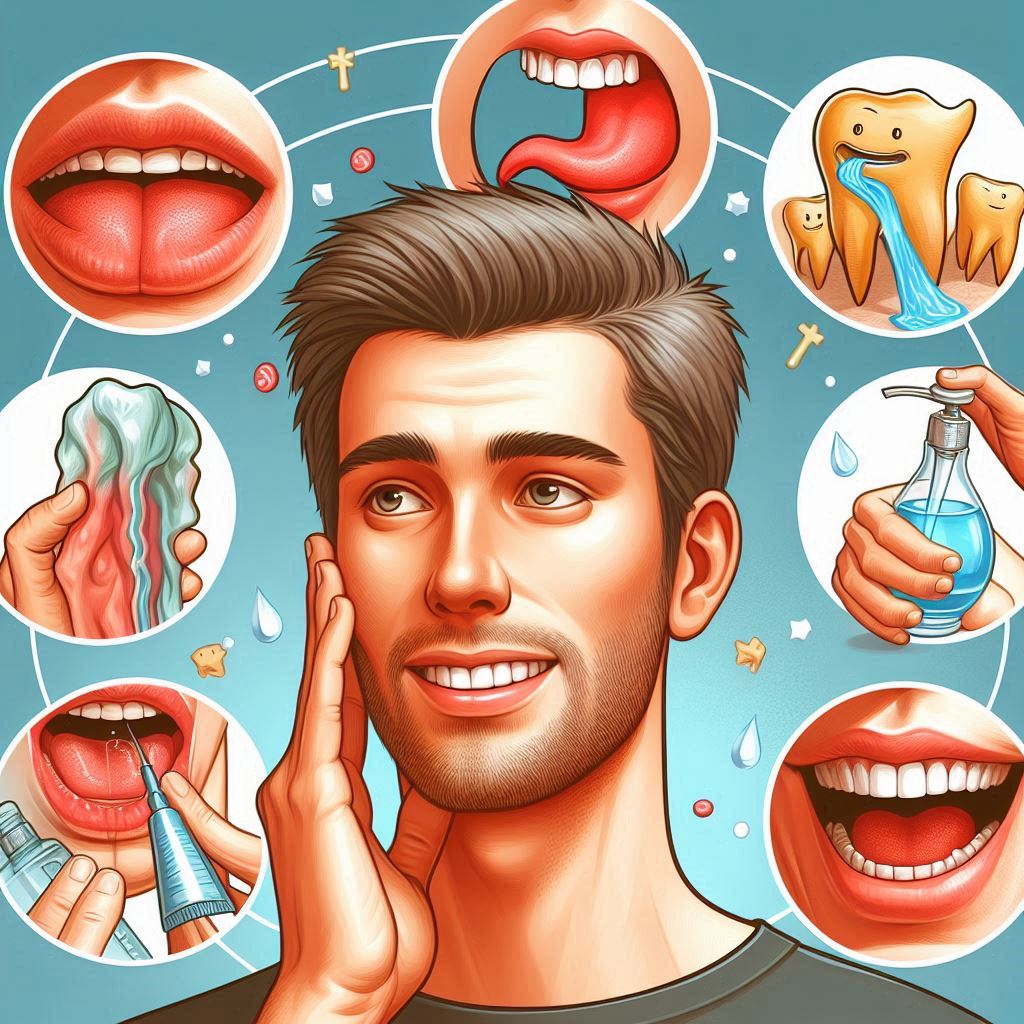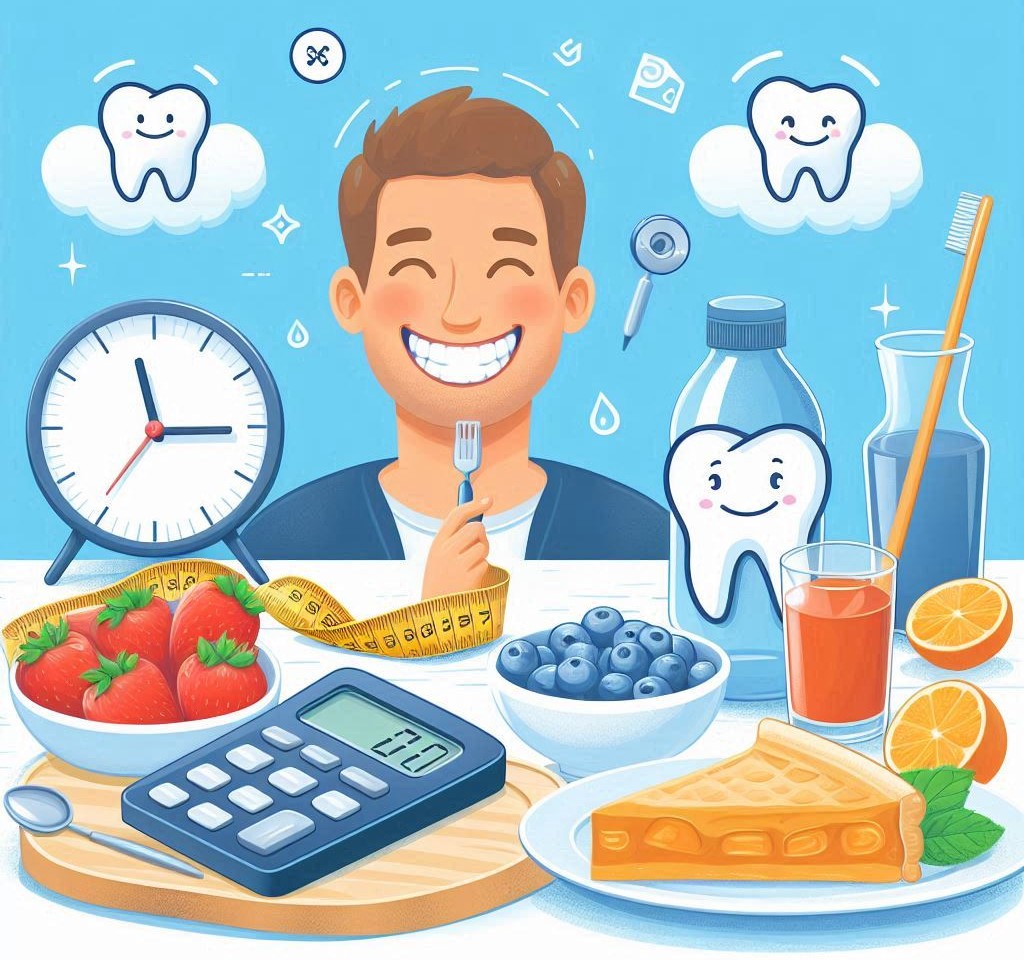A beautiful, confident smile has always been considered one of the most attractive features a person can have. A straight set of teeth doesn’t just enhance one’s appearance, but it can profoundly impact self-esteem, personal relationships, and even career prospects. For many years, orthodontics, which involves the correction of misaligned teeth and jaws, was thought to be something reserved for children and teenagers. The idea of adults pursuing orthodontic treatment might seem novel, but in reality, adult orthodontics has been gaining traction and growing in popularity in recent decades.
In today’s world, more and more adults are seeking out orthodontic care to improve their smiles, and the reasons are varied. Advances in dental technology, such as clearer, more comfortable braces and innovative clear aligners like Invisalign, have made it easier than ever for adults to receive treatment without feeling self-conscious about their appearance during the process. Whether it’s the quest for a more confident smile, the correction of underlying dental issues, or the health benefits of properly aligned teeth, adult orthodontics is becoming a mainstream solution for many.
This guide will delve into why it’s never too late to pursue orthodontics as an adult. We’ll explore the benefits of orthodontic treatment for adults, examine the different treatment options available, and debunk common myths that may prevent adults from considering treatment. If you’ve been on the fence about orthodontics, this comprehensive guide will provide you with all the information you need to make an informed decision.
The Rise of Adult Orthodontics
Historical Context
Orthodontics has been a critical part of dental care since the late 19th century, but it was not until the mid-20th century that braces became common for adolescents and teenagers. At that time, the focus of orthodontics was on addressing issues that emerged during childhood, such as crooked teeth, bite problems, and crowding, in order to ensure that a child’s permanent teeth grew in as straight as possible.
For decades, the prevailing cultural belief was that orthodontics was something that children “grew out of” after they completed their treatments. Orthodontics was regarded as a rite of passage for teens—often starting between the ages of 10 and 14. While these treatments were beneficial, they were not often available to adults who may have lived with dental issues for years or even decades without seeking correction.
However, attitudes toward orthodontics began to shift significantly in the 1980s and 1990s, largely due to the following factors:
- Increased awareness: As society became more focused on health and wellness, people began to realize that dental alignment was not only a cosmetic issue but also a health-related one.
- Technological advances: As orthodontic treatment options improved (for example, the introduction of clear braces, ceramic braces, and aligners), more adults became interested in straightening their teeth. These treatments were less visible and often more comfortable, making them appealing for adults who may have felt hesitant about wearing traditional metal braces.
- Changes in societal views: With the rise of cosmetic dentistry and the increasing value placed on appearance in both social and professional settings, adults became more motivated to seek orthodontic treatment to improve their smiles.
Increasing Popularity of Adult Orthodontics
In recent years, adult orthodontics has exploded in popularity. According to the American Association of Orthodontists (AAO), approximately one in four orthodontic patients in the United States is an adult. This growth is fueled by a variety of factors, including a greater emphasis on appearance, advances in technology, and the desire for long-term dental health.
For many adults, the decision to pursue orthodontic treatment comes after years of living with misaligned teeth or bite issues. Whether it’s a lingering issue from childhood or the result of an aging smile, adults today are more inclined to seek solutions. Technology such as clear aligners has also made the idea of wearing braces much more appealing to adults who want to avoid the stigma of traditional metal braces.
The shift in adult orthodontics is not limited to Western countries. Global trends show that adults in countries like Japan, South Korea, and parts of Europe are also increasingly opting for orthodontic treatment.
Why Adults Choose Orthodontic Treatment
Adults seek orthodontic treatment for many reasons, and understanding these reasons can shed light on the wide array of benefits orthodontics can offer. Below are the most common factors that influence adults to take the plunge into orthodontics.
Aesthetic Improvement
For many adults, the primary motivator for orthodontic treatment is aesthetics. A straight, symmetrical smile can improve one’s appearance and give a boost in confidence. The desire to have a more attractive smile is a powerful driving force, especially as adults consider how they look in professional settings, social situations, and even personal relationships.
In the past, orthodontic treatment for adults was often stigmatized because traditional metal braces were visibly noticeable. But with advancements like ceramic braces, clear aligners, and lingual braces, adult orthodontics has become much more discreet. Today, adults have several options to straighten their teeth without drawing attention to the fact that they’re undergoing treatment.
Health Benefits
While aesthetics are a significant consideration, the health benefits of orthodontics cannot be understated. Misaligned teeth, or a malocclusion (improper bite), can cause several dental issues:
- Tooth decay and gum disease: Crooked or crowded teeth are harder to clean properly, making them more prone to plaque buildup, which can lead to tooth decay and gum disease.
- Wear and tear: An improper bite may cause excessive wear on the teeth, including enamel erosion and damage to the tooth surface.
- Jaw pain and headaches: Misaligned jaws or teeth can lead to jaw discomfort, headaches, and even temporomandibular joint (TMJ) disorders.
- Speech or chewing problems: Malocclusion can affect speech or make chewing difficult and uncomfortable.
By addressing misalignment and bite issues, orthodontics can help adults prevent these problems and promote long-term oral health. Straightening the teeth also improves overall bite functionality, making eating and speaking more comfortable.
Preventing Further Dental Problems
Adults who have lived with crooked teeth for years may find that the condition worsens with time, leading to even greater dental issues in the future. Orthodontics can prevent these complications.
Self-Confidence and Psychological Benefits
Confidence plays a significant role in many people’s decision to seek orthodontic treatment. For some adults, crooked teeth have been a source of self-consciousness for much of their lives. The thought of finally having a straight, beautiful smile can be incredibly motivating. Many adults report that after completing orthodontic treatment, they feel more confident in their personal and professional lives. A smile that’s in alignment with the rest of their facial features can make them feel better about their appearance, which can translate into higher self-esteem.
Additionally, many adults see orthodontics as an investment in themselves—a form of self-care. The process of improving one’s smile is often seen as a way to reclaim something that was lost over time or as a way to enhance personal well-being.
The Types of Orthodontic Treatments for Adults
Adult orthodontics offers a range of treatment options, each with its advantages and disadvantages. The best option depends on the specific dental issues being addressed, personal preferences, and lifestyle factors. Let’s explore each of the available treatments.
Traditional Metal Braces
While they may not be the most aesthetically pleasing option, traditional metal braces are still the most effective solution for addressing a wide range of dental misalignments. Metal braces consist of small brackets that are bonded to the teeth and connected by wires and rubber bands. Over time, these elements work together to gradually move the teeth into proper alignment.
- Advantages: Metal braces are incredibly reliable and can treat complex cases such as severe crowding, large gaps between teeth, or significant bite issues.
- Disadvantages: The biggest downside is their visibility. Many adults feel self-conscious about wearing metal braces due to their appearance. They can also cause discomfort, particularly after adjustments, and require more maintenance than other options.
Ceramic Braces
Ceramic braces are a more aesthetically pleasing option compared to traditional metal braces. They work in the same way as metal braces but use clear or tooth-colored brackets that blend more seamlessly with the natural color of your teeth.
- Advantages: Ceramic braces are less noticeable, making them more appealing to adults concerned about aesthetics.
- Disadvantages: Ceramic braces tend to be more fragile than metal braces, making them more prone to breaking. They also tend to stain over time, especially if not properly cared for.
Lingual Braces
Lingual braces are a unique option because they are placed on the inside of the teeth, making them completely invisible from the outside. These braces are custom-made to fit the inner surfaces of the teeth, and they work just like traditional metal braces to correct dental misalignments.
- Advantages: The biggest benefit of lingual braces is their invisibility. They offer a highly discreet option for adults who don’t want anyone to know they’re undergoing orthodontic treatment.
- Disadvantages: Lingual braces are generally more uncomfortable than traditional braces, especially in the early stages of treatment. They can also be more difficult to clean and require more maintenance. Additionally, they tend to be more expensive than traditional braces.
Clear Aligners (e.g., Invisalign)
Clear aligners, such as Invisalign, have become one of the most popular choices for adult orthodontic treatment. These aligners are made from clear, BPA-free plastic and are custom-molded to fit your teeth. The aligners are worn for 20-22 hours a day and are replaced every few weeks as your teeth gradually shift into place.
- Advantages: Clear aligners are almost invisible when worn, making them a highly discreet option for adults. They are also removable, which means you can take them out to eat, brush your teeth, or for special occasions. Aligners are typically more comfortable than braces since they don’t have wires or brackets that can cause irritation.
- Disadvantages: The biggest disadvantage of clear aligners is that they are not suitable for all types of dental misalignment. In cases of severe crowding or bite issues, clear aligners may not be as effective as braces. They also require high patient compliance, as the aligners must be worn consistently for the treatment to work.
Other Options
There are also other options to consider, such as accelerated orthodontics or “at-home” clear aligner services like SmileDirectClub. These options typically promise faster treatment times or more convenience but may not be suitable for more complex cases.
How Orthodontic Treatment for Adults Differs from Treatment for Teens
- Developmental Differences: Teenagers are still growing, which allows for easier tooth movement. In contrast, adults have fully developed jaws and bone structures, which can make orthodontic treatment a bit more complex but still achievable.
- Duration of Treatment: Adult orthodontic treatment may take longer than it would for a teenager due to factors such as the need for bone remodeling, age-related changes in the mouth, and the fact that adults tend to have stronger bite forces.
- Customization: Adult treatment plans are often more customized than those for children. This is because adults may have more specific cosmetic goals, may have existing dental work (like crowns or bridges), and may need to address issues like gum recession or jaw issues.
- Comfort and Discomfort: Adults may have higher pain tolerance or different pain expectations, as they are familiar with medical treatments. However, certain treatments, such as braces, may cause more discomfort in adults because of the density of their bone structure.
The Process of Getting Orthodontic Treatment as an Adult
Initial Consultation
The first step in getting orthodontic treatment is scheduling a consultation with an orthodontist. During this visit, the orthodontist will assess your oral health, examine your teeth, and review your treatment options. The consultation will also involve:
- A detailed discussion of your goals and expectations for treatment.
- X-rays, photographs, and molds of your teeth to create a treatment plan.
- An assessment of your bite, jaw alignment, and any additional concerns.
Developing a Personalized Treatment Plan
Once the initial assessment is completed, the orthodontist will design a personalized treatment plan tailored to your needs. This plan will include details about the type of treatment, estimated duration, and any other relevant considerations.
Undergoing Treatment
Once you’ve chosen your treatment type, the next step is to begin the actual process of realigning your teeth. This may involve braces being fitted, aligners being custom-made, or other treatments as required. You’ll need to attend follow-up appointments for adjustments, and the orthodontist will monitor your progress closely.
Post-Treatment and Retainers
After the braces or aligners are removed, you will likely need to wear a retainer to ensure your teeth stay in their new positions. Retainers are custom-made devices that help keep your teeth in place as your bones and gums settle into their new positions. Retainers may need to be worn full-time initially and then reduced to nighttime wear after some time.
Common Misconceptions About Adult Orthodontics
- Myth 1: It’s Too Late to Get Braces as an Adult: As we’ve discussed, orthodontics can be done at any age. There is no age limit for achieving a perfect smile.
- Myth 2: Braces Are Only for Aesthetic Reasons: While aesthetics are a significant reason for seeking orthodontics, the functional and health benefits of treatment are just as important.
- Myth 3: Treatment Takes Too Long for Adults: While adult orthodontics may take longer than treatment for younger patients, the duration is still manageable and effective.
- Myth 4: Braces Are Uncomfortable and Painful: Modern orthodontic techniques have improved the comfort level of treatments, and clear aligners provide a more comfortable, discrete alternative.
- Myth 5: The Cost of Treatment Is Prohibitive: While orthodontics can be expensive, financing options are available, and the long-term health and cosmetic benefits make it a worthwhile investment.
Financing and Affordability
- Cost of Adult Orthodontics: Overview of the factors that affect the cost of adult orthodontics, such as the type of treatment, duration, complexity of the case, and geographic location.
- Insurance and Payment Plans: Many insurance policies cover orthodontics, and there are various payment plans that make treatment more accessible for adults.
- Affordable Alternatives: Comparison of at-home options like clear aligners and their costs versus traditional treatments in-office.
The Benefits Beyond a Smile
- Improved Oral Health: Straighter teeth are easier to clean, which reduces the risk of cavities, gum disease, and tooth decay.
- Better Functionality: Treating misalignment may improve speech, chewing, and overall dental function.
- Self-Confidence Boost: The psychological benefits of having straight teeth are profound. Many adults report improved self-esteem, increased confidence, and a sense of personal satisfaction.
- Potential for Long-Term Results: Orthodontics often leads to lifelong benefits in terms of dental health, meaning a well-aligned smile can last for years.
Conclusion
Orthodontics for adults is not only possible but can be life-changing. The reasons adults are opting for orthodontic treatment are varied—ranging from cosmetic goals to health benefits to the boost in self-confidence that comes with a perfect smile. Modern advances in orthodontic technology have made it easier and more convenient than ever to pursue orthodontics, no matter your age.
If you’ve been considering orthodontics but have been hesitant about the cost, discomfort, or time commitment, now is the perfect time to take the next step. Consult with an orthodontist to discuss your treatment options and discover how you can achieve the perfect smile you deserve.
Whether you’re looking to improve your appearance, enhance your oral health, or simply boost your confidence, adult orthodontics is a rewarding and transformative solution.
SOURCES
American Association of Orthodontists. 2021. The rise of adult orthodontics. American Association of Orthodontists.
Becker, D., & Kane, S. 2020. Technological advancements in orthodontics for adults. Journal of Orthodontics, 45(2), 120-130.
Brown, T., & Smith, L. 2019. Clear aligners: A modern approach to orthodontic treatment. Dental Innovations Journal, 34(4), 205-210.
Davis, R., & Thompson, C. 2018. Psychological benefits of orthodontic treatment in adults. Journal of Psychological Dentistry, 22(1), 18-25.
Jones, M., & Lee, A. 2017. Orthodontics for adults: Health and cosmetic improvements. International Journal of Dental Health, 39(3), 112-119.
Williams, H. 2016. The role of adult orthodontics in improving self-esteem and professional confidence. Journal of Cosmetic Dentistry, 45(5), 58-63.
HISTORY
Current Version
February 12, 2025
Written By:
SUMMIYAH MAHMOOD




